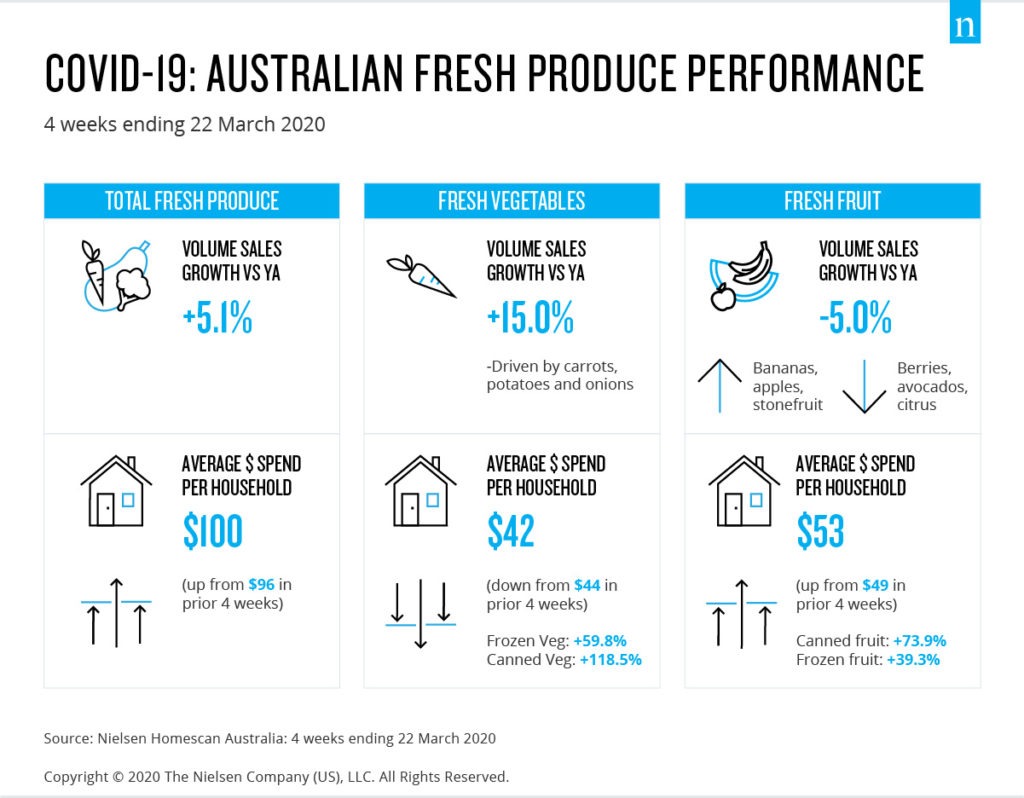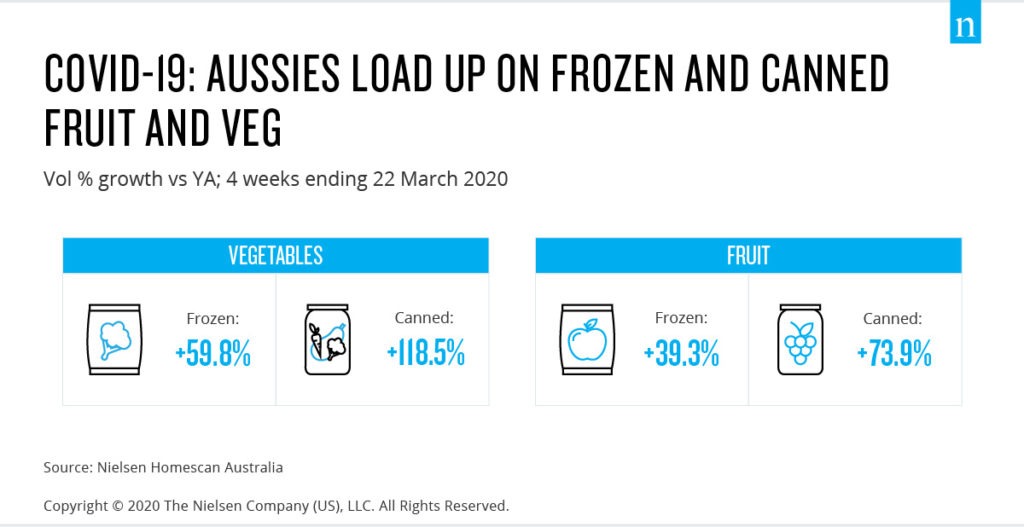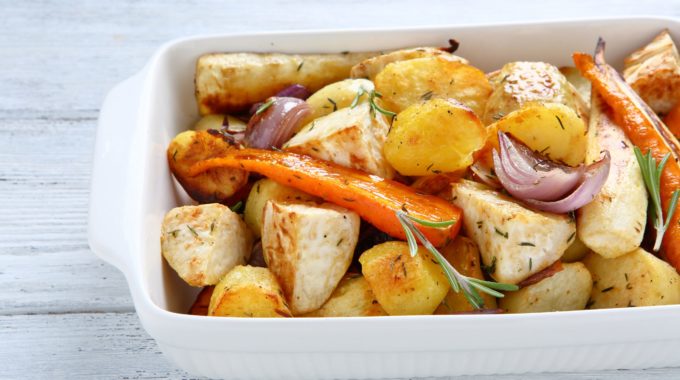Shoppers switch to longer-lasting produce
In the wake of COVID-19, Australian consumers have been keeping their kitchen cupboards packed with food essentials like pasta and rice. But shoppers are also stocking up on healthy produce items.
New Nielsen Homescan research has revealed that, in the four weeks ending March 22, overall growth of the fresh produce category reached a two-year high, up 5.1% in volume sold compared to the same period a year ago.
But as people spend more time at home and try to avoid taking too many trips to crowded supermarkets, they’re also shopping for produce differently.
“Similar to consumers in North America, the latest data highlights that Australians are stocking up on fruits and vegetables that have a longer shelf-life, and in some cases, seeking produce options that are more cost-effective such as canned or frozen fruit and vegetables,” says Melanie Norris, Nielsen Australia’s Fresh Industry Lead. “In the month of March, both shelf-stable and frozen produce have seen unprecedented sales growth.”
A deep-dive into the fresh food category shows that the primary growth drivers were all vegetables that are known to last longer in kitchen cupboards and fridge drawers. In fact, while volume sales for fresh vegetables increased by 15% in the latest four weeks, it was potatoes, carrots and onions – all vegies that store well – which contributed the most sales growth to the category.
But while thoughts of health are at the front of people’s minds, and snacking at home is at an all-time high, surprisingly, fresh fruit sales declined in March. While bananas, apples and stone fruit recorded growth; traditional lunchbox and snacking favourites like berries, avocados and citrus all saw declines compared to a year ago. However, once schools reopen, sales in these categories could start to recover.

As uncertainty surrounding the coronavirus continues, Australian shoppers are gravitating towards produce that can last for weeks, not days. In the four weeks to March 22, frozen fruit recorded an all-time high for volume growth (+39.3%), while canned fruit sales also jumped by 73.9%.
But given that the average price of fruit was 7.9% higher than the same time year ago, budget constraints may have influenced these stronger sales in frozen and canned fruit. The same pattern could be seen for vegetables, with frozen sales up by 59.8%, while canned vegetables increased by 118.5%.
“Over the next few months, retailers and brands could consider finding new ways to inspire consumers to use the fruit and vegetable options they’re purchasing,” says Norris. “Recipe ideas using longer-lasting vegetables with stockpiled pantry items, or creative ways to use frozen and canned produce could help to drive consumption. “Working with smaller outlets to provide home delivery options may also assist in facilitating produce purchases for those who are homebound and unable to make it out to their local store.”

Once things get back to normal post-COVID-19, trust, safety and place of origin should once again become more important considerations for consumers buying fresh fruit and veg. At the same time, sales of longer-lasting fruits and veg may soon start to slow as households eat through their large stockpile of goods.
“Learnings from China suggest that online shopping for fresh foods will only continue to rise in importance,” Norris says. “From a retail perspective, much will need to be done to build the supply chains to meet future omnichannel food demands.”









